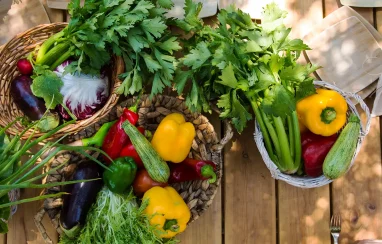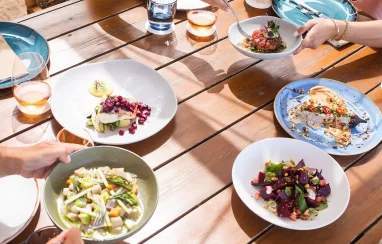By Isabella Zampetaki
Seated around a long table in a welcoming Westin Resort Costa Navarino meeting room, ten guests garbed in pristine chef whites are deeply engrossed in the lesson. I’m right there among them, diligently taking notes on the precise temperature for initiating the Maillard reaction, the nuances of caramelization, and Escoffier’s quintessential five ‟mother sauces.” This rigorous educational endeavor is part of a culinary boot camp program offered by the prestigious Culinary Institute of America (CIA), the renowned educational organization that served as a launch pad for nearly 55,000 alumni around the globe, including such outstanding talents as Grant Achatz, Cat Cora, and Enrique Olvera.
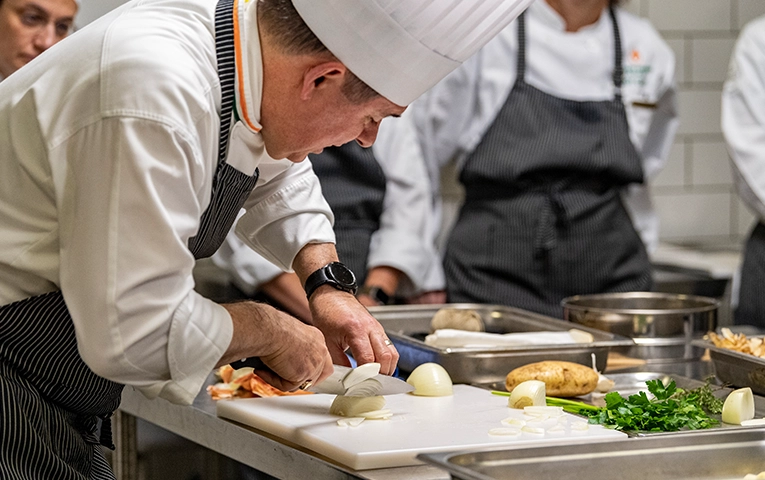
George Shannon, the chef instructor who led the program, tells me that some of the participants are repeat CIA boot campers, traveling from the United States for this course. Their participation in this additional program will not only broaden their culinary expertise, it will also allow them to acquire these new skills in the lush landscape of Messinia, a place synonymous with bounty and beauty. The workshop offers participants a unique blend of culinary training and experiential learning to help them refine their cooking abilities while also enjoying the myriad pleasures that the region affords them: taking long hikes on verdant trails; joining in exhilarating water sports; mastering their golf swing on globally acclaimed courses; and indulging in luxurious wellness services. The program incorporates a holistic approach to culinary education, combining rigorous training in the kitchen with relaxing Mediterranean leisure activities and the opportunity to enjoy the region’s outstanding natural beauty.
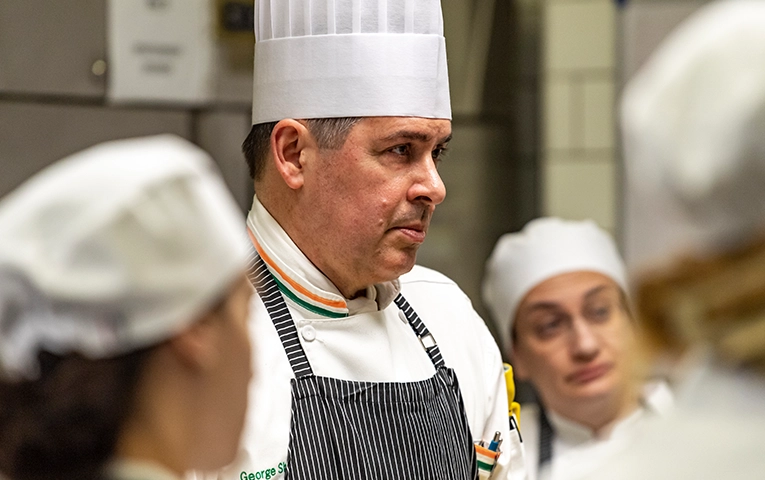
Even with these beguiling surroundings, however, what most participants are anticipating is the ‟main course,” the cooking lessons themselves. And they are certainly informative, a fact that’s evident to me as I look at those notes I mentioned earlier: the Maillard reaction involves the sugars and proteins of food, occurring at 140◦ C, giving it color, rich flavor, and aroma. Caramelization acts on the sugars in any ingredient and occurs at a higher temperature, around 160◦ C. As for the five basic sauces according to Escoffier, they are: béchamel, espagnole, tomato sauce, hollandaise, and velouté.
The lessons also include historical elements, fundamental information about food chemistry, and practical tips based on the chef’s own extensive kitchen experience. In the practical part of the training, the participants, who are primarily interested in becoming better home cooks, step into the professional kitchen to prepare the day’s recipes. Divided into four groups, they cook dishes such as scaloppine sauté a la meunière; fresh linguine with spinach; and ribs with honey and thyme. Periodically, the chef gathers the whole team at one of the kitchen stations to explain the secrets behind each preparation. Proper preparation and organization are among the key skills taught. As time progresses, the pace quickens, and students move feverishly about the kitchen. The air is already filled with a tempting mix of aromas when the chef calls out that time will be up in ten minutes, as if announcing the countdown on a reality cooking show.
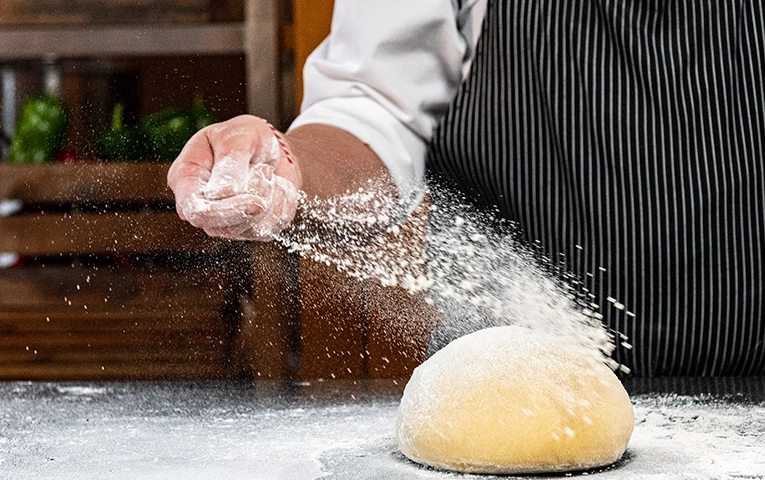
However, what follows the cooking is quite different from what occurs in those competitive formats. Here, the entire team sits down together at a beautifully appointed table, sharing the fruits of their labor that have come fresh from the ovens and pans. Beyond the cooking skills, the experience imparts other lessons. As Maria, who is attending the program with her partner, notes, ‟This challenging kitchen experience will make us reconsider how demanding we are when we dine as customers in a fine restaurant. It’s letting us understand what happens behind the scenes.”
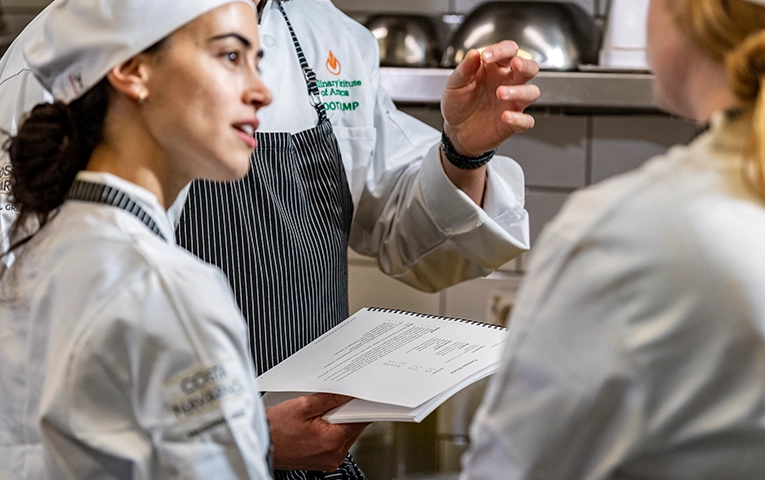
The programs at the Culinary Institute of America (CIA) also reflect the trends defining food in the US today, including the emphasis on plant-forward foods. Chef Shannon explains: ‟More and more people want to eat healthier both for themselves and for the planet. At the CIA, it’s important for us to contribute to changing food mindsets, and through our Menus of Change® initiative, we teach professional chefs and food service operators how to optimize their menus so that they are healthy, sustainable, and most importantly, delicious. We need to stop viewing vegetables as boring and understand they are the raw material for very creative dishes.”
The plant-forward approach prioritizes vegetables, whole grains, legumes, and healthy fats—things that are very much in line with the The Mediterranean Diet. The CIA has created a unique program of courses that embrace this approach. As Shannon says, “In the plant-forward cooking bootcamp, there’s a day where, among the dozen dishes we prepare, only one contains meat. The result is so tasty and balanced that no one misses the animal protein.”
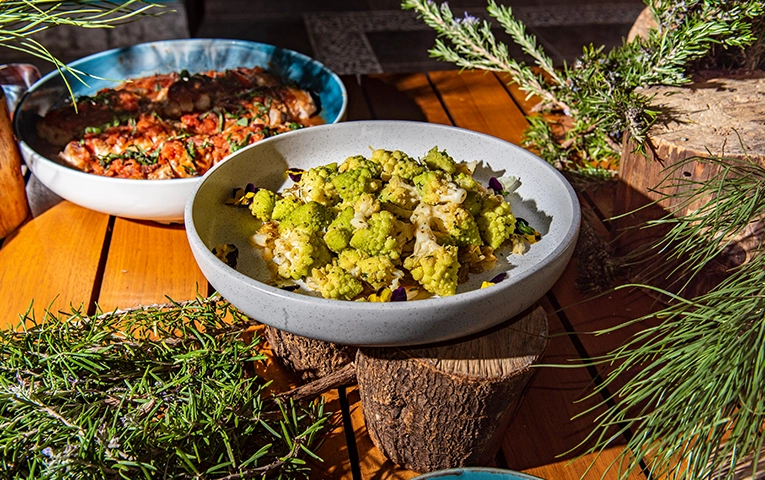
Reflecting on the Kitchen Experience
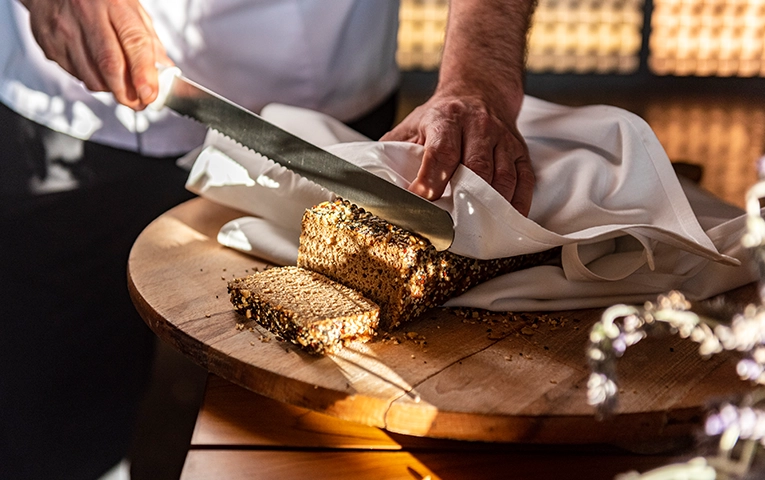
Providing a fitting epilogue to the five-day culinary course cycle is the ‟Philosophy Walk,” an outdoor discussion led by Associate Professor Eleni Volonaki from the University of Peloponnese. In the shade of one of Costa Navarino’s majestic centuries-old olive trees, talk turns to the role of food in ancient Greece. Seated on café-style chairs, we explore how the concept of vegetarianism existed among both Pythagorean philosophers and followers of the Orphic religion as a means of purification. Regarding the ideal diet for athletes according to ancient texts, we learn about two opposing theories: one highlighting the importance of animal protein and the other proposing ‟dry eating,” which involves consuming foods such as dried fruits, cheese and bread. Millennia later, we find that the debate is still ongoing.
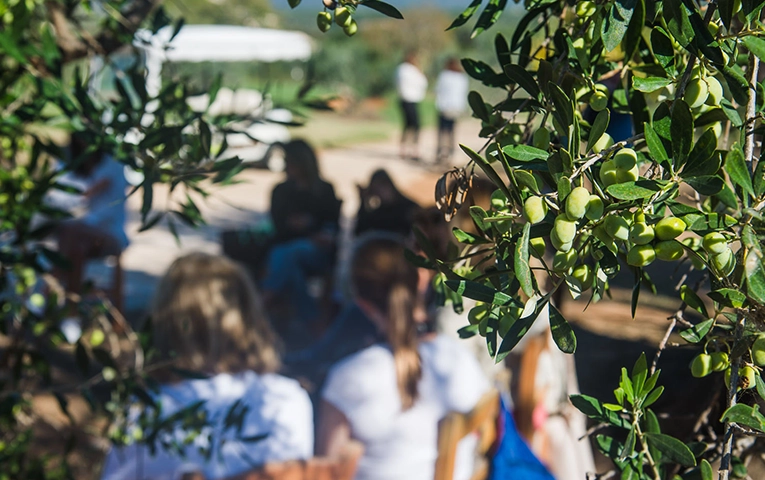
On our way back to the hotel, walking through olive groves that overlook the golf courses, Professor Volonaki shares the wisdom of ancient Greek thinkers. ‟Some people live to eat, but I eat to live,” she says, quoting Socrates, and then shares Hippocrates’ advice: ‟Let food be thy medicine and medicine be thy food.” The quote from Epicurus that she gives us seems particularly apt: ‟Before we decide what we eat and drink, we must decide with whom we eat and drink.” Michael, one of the youngest in our group, says that this is the reason he’s taking part in the program. He wants to learn more about cooking so that he can care for his loved ones through the food he makes. Not everyone in the class shares the reasons that brought them on this journey, but they’re all clearly committed to cooking, and this discussion with the professor gives us all an invaluable opportunity to think about the meaning that food and its preparation hold for each of us.
